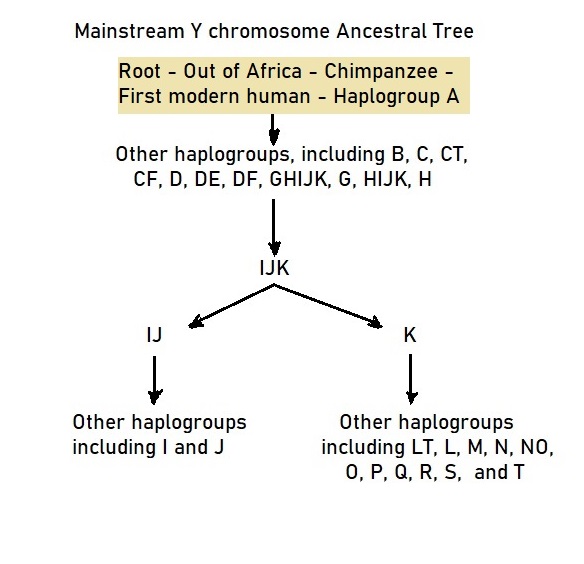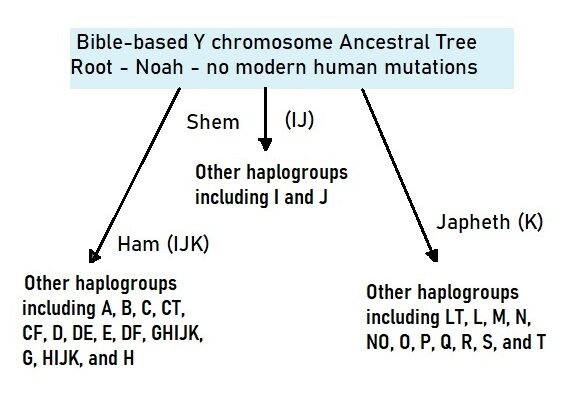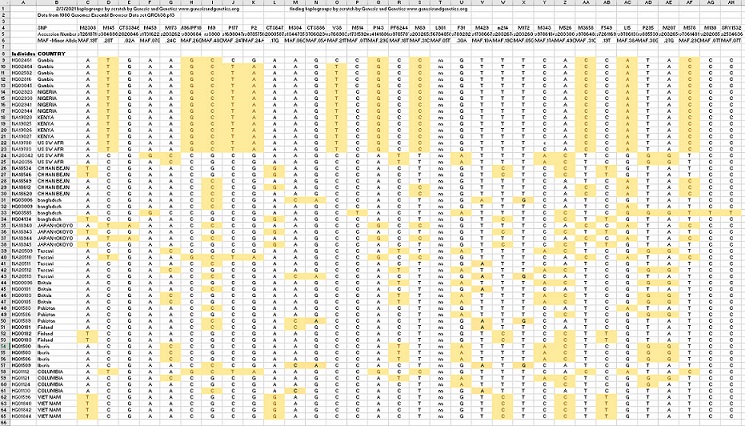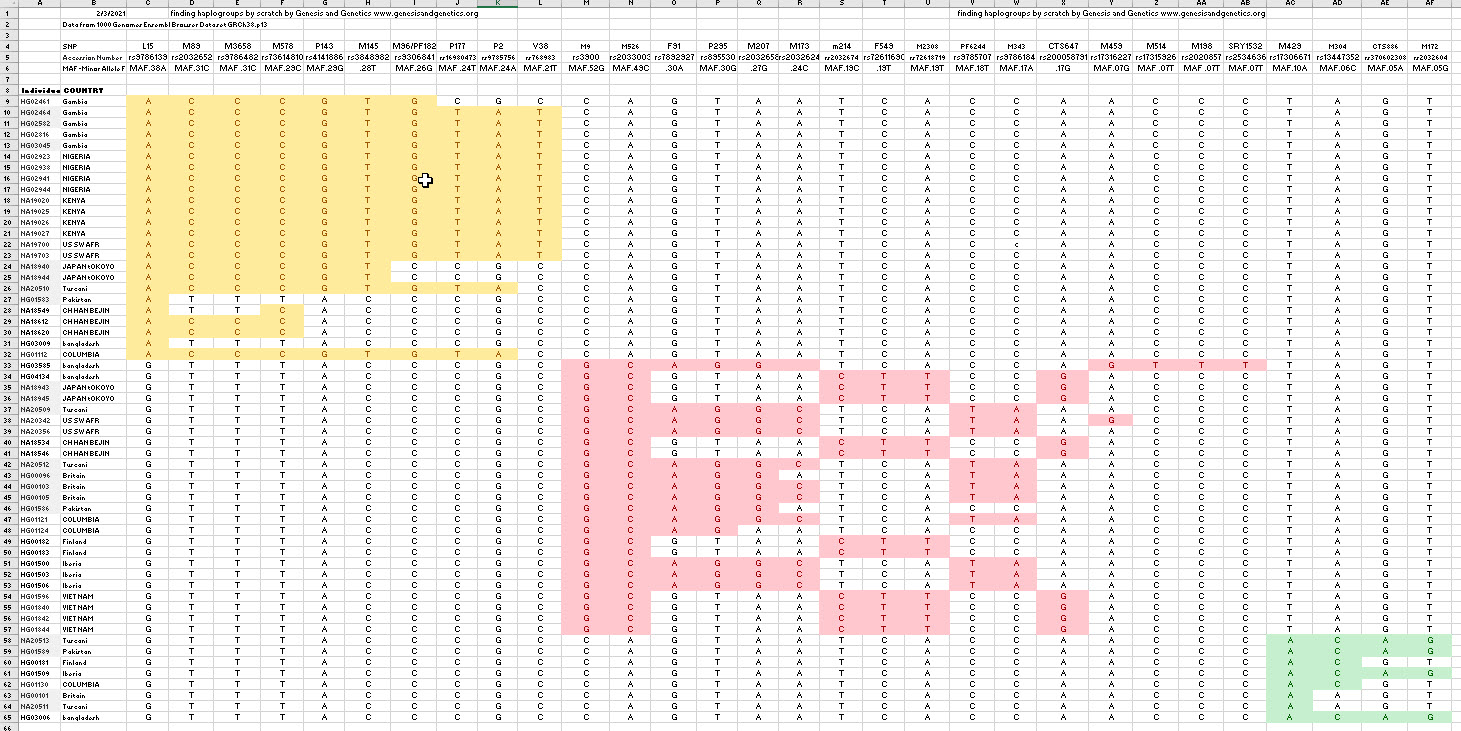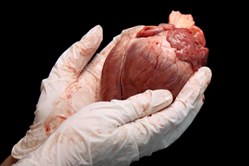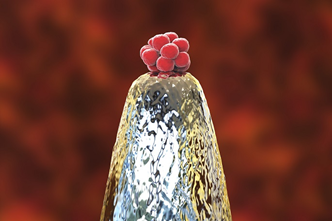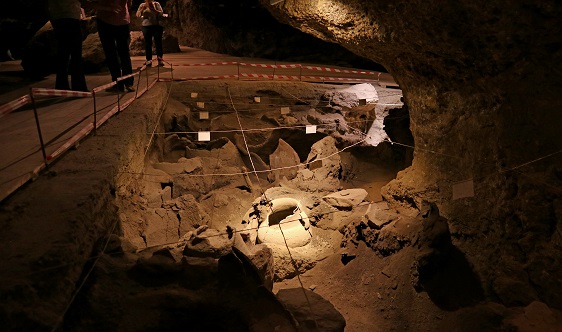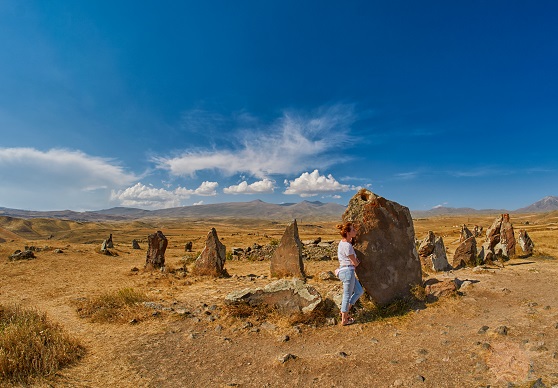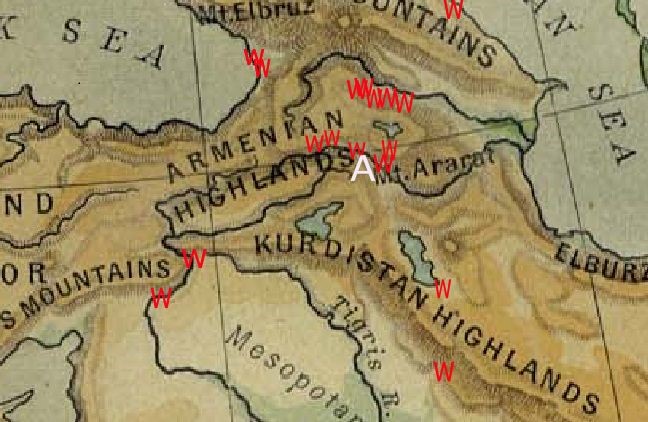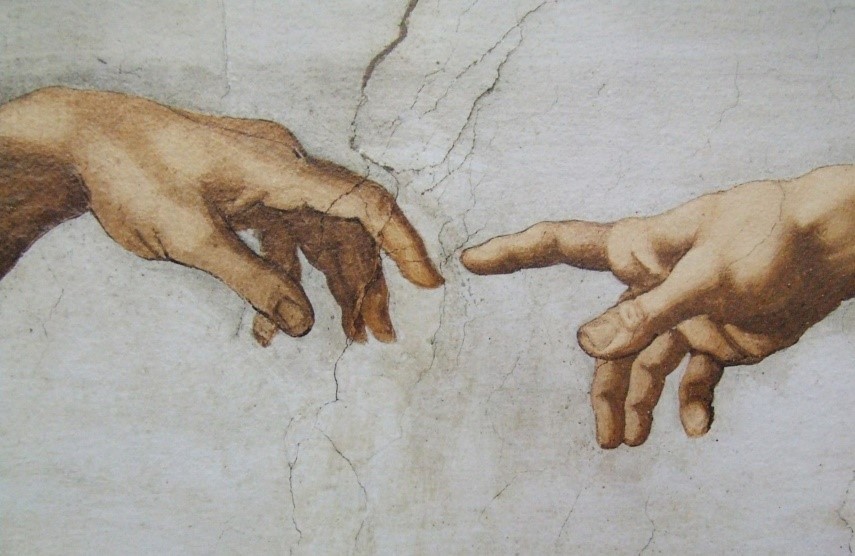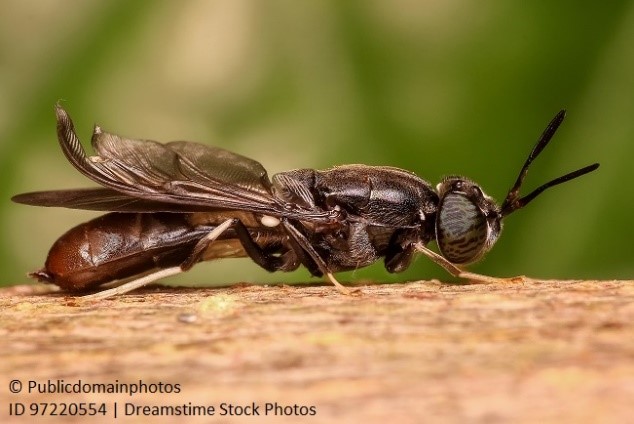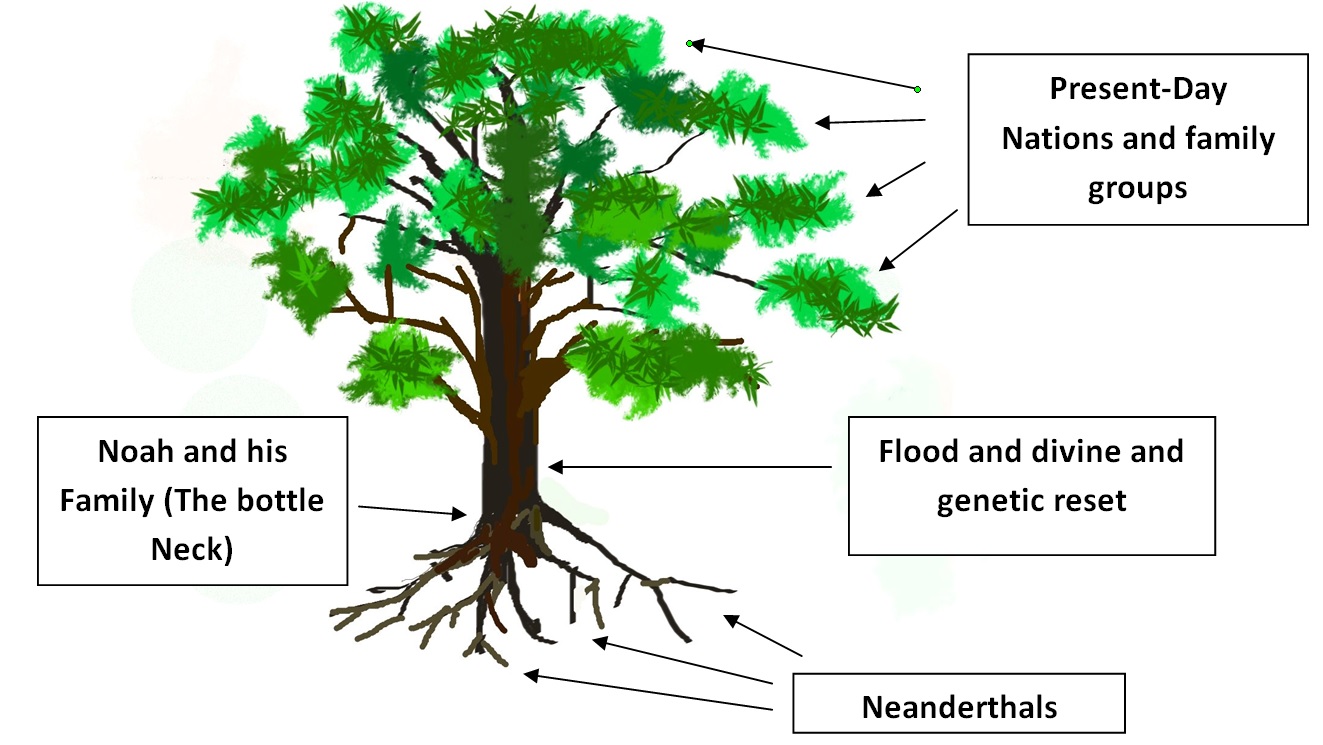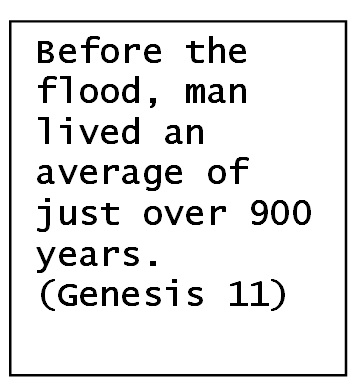Foreword
Those who believe the Bible accept it by faith; however, there are many accounts in the Bible that are testable scientifically. One of these accounts is that of Noah having three sons, and these three sons repopulated the entire earth after the flood. This paper provides scientific evidence that all men alive today came from one of three ancient ancestors. Our findings are based on Y-chromosome analysis. The analysis is simple, straightforward, and repeatable; anyone can understand it and repeat it. The data is fully documented herein and generated from mainstream scientific community sources (Reference 1 is the browser and Reference 2 contains the sequences used).
The Bible made the following proclamation thousands of years ago, and now we have the genetic tools to test its validity:
Genesis 9:19 These are the three sons of Noah: and of them was the whole earth overspread.
Genesis 10:32 These are the families of the sons of Noah, after their generations, in their nations: and by these were the nations divided in the earth after the flood.
Background
We know that the Y-chromosome is passed from father to son, and, in general, each generation passes on a few genetic variants to the next generation. These variants provide genetic markers which are highly valuable for tracking ancestry. Geneticists sort people into groups called haplogroups because they contain like genetic markers. The haplogroups form a family tree for all humanity and allow us to trace ancestry back to our most ancient ancestors.
Former Work
We, at Genesis and Genetics, made a preliminary evaluation of Y-chromosome DNA genetic markers and discovered that all human men on earth came from one of three ancient ancestors (Reference 3). We found that any human man could trace his genetic markers back to one and only one of three ancient ancestors. Any man with a marker ‘A’ at rs9786139 is from one ancient ancestor, a marker ‘A’ at rs17306671 is from another ancient ancestor, and a marker ‘G’ at rs3900 is from the third ancient ancestor. It was easy to associate these three most ancient ancestors with Ham, Shem, and Japheth by looking at Biblical history of migration and nations. Ham had the ‘A’ at rs9786139, Shem had the ‘A’ at rs17306671, and Japheth had the ‘G’ at rs3900.
This former research was based on a study of 57 modern human men. All the men had one, and only one of the three markers stated above.
Note: We use the terms “mutations,” “variants,” and “markers” interchangeably.
Confirmation
Since our original study, we have looked at many more sequences, a total of 1233 Y-chromosome genomes, and found they all conformed to our original findings. Reference 4 documents the 1233 human genomes and which ones are from each of Noah’s three sons. All 1233 humans had one and only one of the three markers. There were no exceptions. This paper confirms our original findings and compares our Biblical ancestral family tree to that of mainline science.
Comparison to Mainline Science
In general, our analysis agreed with mainstream science concerning haplogroups. Therefore, our family tree uses the same haplogroups as our friends in mainstream science. But they are rooted differently. Here is the secular science tree followed by our family tree. There are several versions of the secular trees (called phylogenetic trees), but we, generally, used the one generated by the International Society of Genetic Genealogy, ISOGG (Reference 5).
As one can see, the two trees are similar, but the root and flow of genetic markers are different. The secular tree is rooted in haplogroup A, and the Biblical tree is rooted in Noah dividing into three separate haplogroups; one from Ham; one from Shem; and one from Japheth. We do not present Noah’s DNA, but it is simply his three sons’ DNA less their genetic markers.
Finding the Tree Root
Armed with these 1233 diverse genomes, we began our search by noticing that a few mutations/genetic markers, were common in the population; some were up to 52 percent of the population. It is quite logical to assume that the higher the mutation’s frequency, the better chance that it is at or near the root of our family tree.
For example, if a mutation is in 1/2 of the population, it probably originated when the population was approximately 2 men. If a mutation is in 1/10th of the male population, it probably originated when the male population was approximately 10. And if a mutation is in1/1,000,000), it probably originated when the world population was 1,000,000.
So, we decided that any mutation with a frequency of more than 5 percent could be one of Noah’s three sons. This assumption would allow for some genetic drift and the inability for our 1233 subjects to exactly match the whole world population distribution.
All Men came from three ancient ancestors
Next, we took each of the mutations with frequencies higher than 5 percent and used them to form genetic groups, i.e., haplogroups. Quickly, we realized that every mutation belonged to one and only one of three ancient ancestors.
It appeared that we found Shem, Ham, and Japheth. There was a Shem haplogroup, a Ham haplogroup, and a Japheth haplogroup. All 1233 genomes fit into one and only one of the three. There were no exceptions. The three root mutations had frequencies of 10%, 38%, and 52%. And, as expected, they added up to 100% of the population. Furthermore, Shem, Ham, and Japheth were associated with the three ancient ancestor mutations easily by looking at the geographical locations of each group and comparing them to Bible history. Ham went south and east; Japheth went north and east, and Shem populated the Near East and Europe.
Noah’s Y-chromosome is impossible to find directly. The reason is that he is the origin of all male humanity and he had, by definition, no genetic markers. Therefore, the way to find Noah’s Y-genome is by determining the genomes of his sons and deleting all their mutations.
The true root of humanity was Adam. Adam’s DNA went through the bottleneck of Noah. So we all came from Adam, and we all came from Noah. Adam is the root of all humanity, and Noah is the root of post-flood humanity.
Genetic Mutations/Markers Flow in One Direction
Just as water flows downstream, so do genetic markers. Genetic markers flow from most ancient ancestors to modern ancestors. For instance, your great-grandfather passed markers to your grandfather who passed additional markers to your father. Your father passed his additional markers to you. And if you are a man, you too will pass new markers to your sons. Lineage flows downstream. More and more new markers appear in offspring as the generations pass. However, the original markers of your ancestors remain in your genome. A key point here is that as the markers flow away from the root, the new markers divide the offspring into sub-haplogroups. This dividing into sub-haplogroups shows the direction of the genetic marker flow. Distant branches have only the markers close to the root but are missing many of the markers in their cousins, second cousins, etc.
Therefore, as expected, the data shows that markers flow from Noah’s three sons to their sub-haplogroups. Consider just haplogroup K. Everyone from haplogroup K has the rs3900 G marker. Likewise, the sub-haplogroups have additional markers that show they are later generations forming smaller haplogroups such as M, N, O, P, Q, R, S, and T. T must come from K, but K cannot come from T.
Since genetic mutations/markers flow downstream, it is not possible that the root of the Y-chromosome family tree is rooted in a marker with a small frequency. In order for that to happen, it would take many bottlenecks, overwrites, drift, and other genetic contortions.
Full Population Representation
The three adjacent haplogroups, IJ, IJK, and K contain 100 percent (Ham 38%, Shem 10%, and Japheth 52%) of the 1233 genomes analyzed. In other words, they are the source of all modern humans. Take any other combination of the other haplogroups and mix and match them; they do not represent all humanity; they do not add up to 100 percent. The only way you get one hundred percent is to use IJ, IJK, and K.
Biblical and Secular History
The haplogroups IJ, IJK, and K comprise people from Mid-East, West Asia, and Near East. According to the Biblical narrative, all humanity came from the Armenian mountains which are in West Asia and close to the Near East and the Mid-East. In short, these haplogroups locations fit nicely into Biblical history.
The historical age began in Mesopotamia, shortly after the flood. These earliest writings document a worldwide flood and the world populated by flood survivors. Nowhere do these legends and writings record mankind originating from other parts of the world.
Summary
The Y-chromosome DNA is the perfect vehicle for scientifically testing the portion of the Bible that says all modern human men were born of three ancient men. The Y-chromosome data of 1233 genomes corroborates the Biblical account. We now have a Biblical family tree and can trace our ancestry to the Biblical sons of Noah.
Future Work
We are in the process of identifying the DNA of Noah’s 16 grandsons in the family tree.
References:
- http://useast.ensembl.org/info/about/publications.html
- https://www.genome.gov/27528684/1000-genomes-project
- https://www.genesisandgenetics.org/2021/04/16/y-chromosome-migration-and-the-biblical-phylogenetic-tree-or-finding-ham-shem-and-japheth-via-y-chromosome/
- https://www.genesisandgenetics.org/Ancient.xlsx
- https://docs.google.com/spreadsheets/d/1Y0GXjhazYa46u0EpPA9b0Y0RVWuh5lDzww_o979mbjQ/edit#gid=1904113265
- https://useast.ensembl.org/index.html
